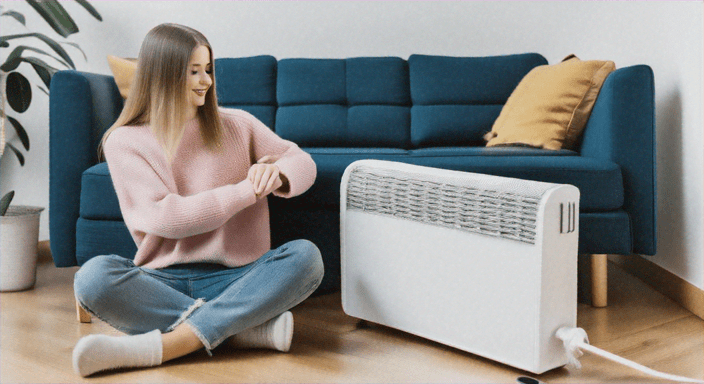The surge in popularity of portable air conditioners (PACs) is largely due to their adaptable nature, offering a convenient cooling solution for individuals seeking temporary relief from high temperatures or those with specific cooling requirements for certain areas. The pertinent question remains: are they truly effective? This comprehensive guide delves into the efficacy, advantages, and factors to consider when using portable air conditioners, assisting you in determining whether they align with your cooling needs.

Understanding the Mechanism of Portable Air Conditioners
To cool a room, portable air conditioners extract warm air, chill it, and then release the heat via an exhaust hose that is usually routed out a window or through a wall vent. Here’s a concise breakdown of the process:
-
Intake: The unit draws in the warm air present in the room.
-
Cooling: The air is passed over a coil cooled by refrigerant, which reduces its temperature.
-
Exhaust: The extracted heat from the air is expelled through an exhaust hose.
-
Dehumidification: Many PACs also extract moisture from the air, which is either collected in a tank or expelled through a hose.
Assessing the Effectiveness of Portable Air Conditioners
Cooling Capacity
The efficacy of a portable air conditioner is significantly influenced by its cooling capacity, quantified in British Thermal Units (BTUs). Below is a general guideline for BTU requirements based on room dimensions:
-
Up to 200 sq. ft.: 8,000 BTUs
-
200-300 sq. ft.: 10,000 BTUs
-
300-450 sq. ft.: 12,000 BTUs
-
450-600 sq. ft.: 14,000 BTUs
Selecting a unit with the correct BTU rating for your room size is vital for effective cooling. An underpowered unit may fail to adequately cool the space, whereas an overpowered unit might cool too rapidly without sufficient dehumidification.
Energy Efficiency
In comparison to window units or central air systems, portable air conditioners generally exhibit lower energy efficiency. The Energy Efficiency Ratio (EER) serves as a useful metric for assessing efficiency – the higher the EER, the more efficient the unit. Many contemporary PACs are equipped with energy-saving features like programmable timers and eco modes to help minimize energy consumption.
Airflow and Coverage
The performance of a PAC can be influenced by its design and placement. It is essential to ensure there is sufficient clearance around the unit for optimal airflow and to correctly position the exhaust hose to prevent heat from re-entering the room. PACs are generally most effective in single rooms or smaller spaces rather than attempting to cool entire homes or large areas.
Advantages of Portable Air Conditioners
Flexibility and Portability
A key benefit of PACs is their portability. These units can be effortlessly relocated from one room to another, offering cooling precisely where it is most needed. This makes them an ideal choice for renters, residents of small apartments, or anyone requiring a temporary cooling solution.
Ease of Installation
Portable air conditioners do not necessitate permanent installation. Typically, setting up a PAC involves attaching the exhaust hose to a window kit and plugging the unit into a standard electrical outlet. This straightforward installation process is particularly advantageous for those unable or unwilling to install a window unit.
Additional Features
Contemporary portable air conditioners frequently come equipped with a range of features, including:
-
Remote Controls: Facilitate easy adjustments from a distance.
-
Dehumidifier Functions: Aid in reducing humidity levels, enhancing overall comfort.
-
Multiple Fan Speeds: Offer customizable airflow options.
-
Auto-Restart: Ensures the unit resumes operation following a power outage.
Considerations and Limitations
Noise Level
Due to the compressor and fan being housed within the room, portable air conditioners can be noisier than other cooling options. It is important to review the decibel rating if noise is a concern.
Maintenance
Consistent maintenance is required to maintain the efficient operation of a PAC. This includes cleaning or replacing air filters, emptying condensate tanks (if applicable), and ensuring the exhaust hose is free of obstructions.
Space Requirements
Although portable, PACs do require floor space and an accessible window or vent for the exhaust hose. Ensure that the chosen location can accommodate the unit without obstructing walkways or furniture.
Conclusion
When used appropriately, portable air conditioners can serve as an effective cooling solution. They offer flexibility, ease of installation, and a variety of features that make them suitable for diverse situations. However, it is crucial to select the correct size and consider the limitations to ensure optimal performance.





